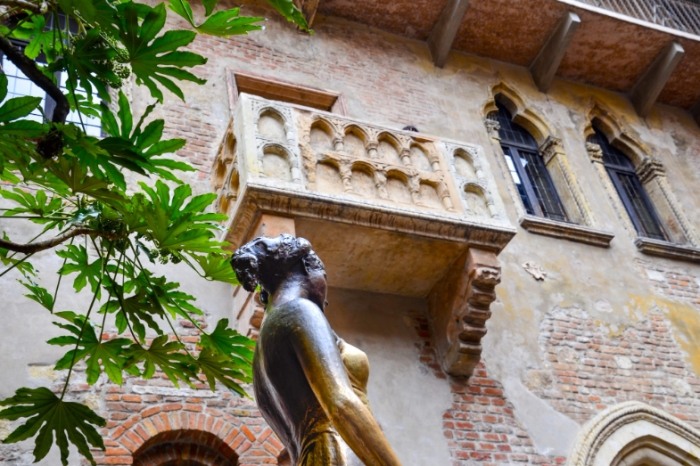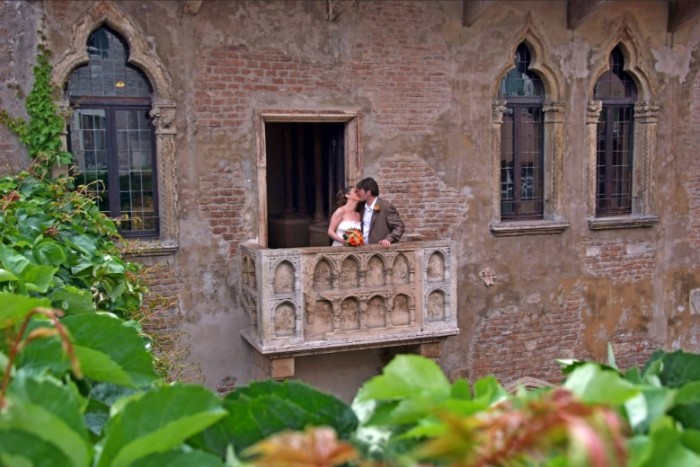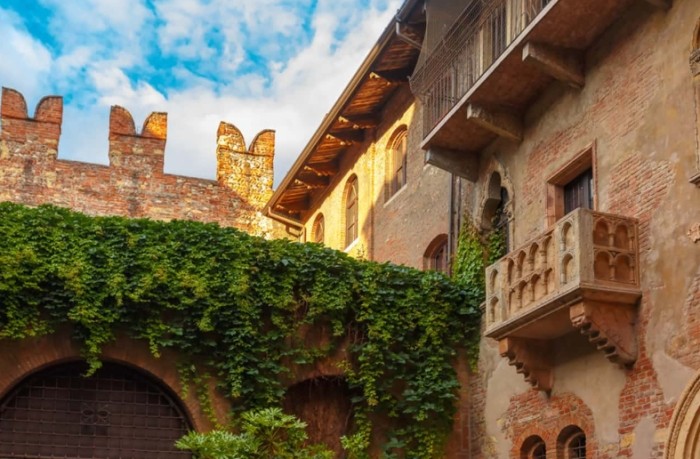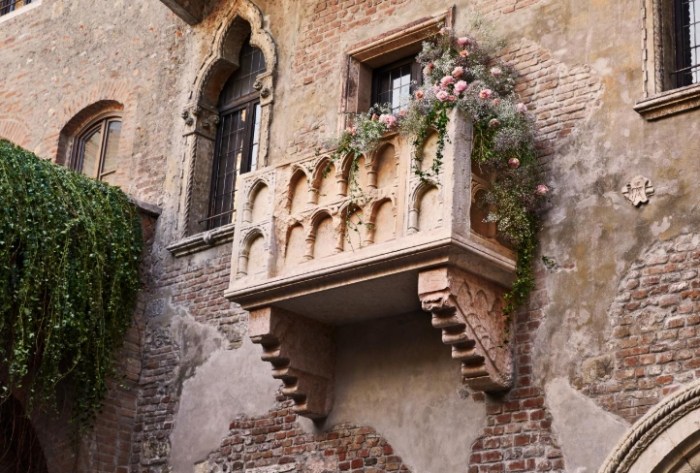Dreaming of visiting Juliets House in Verona? Get Juliets House tickets, check Juliets House Verona opening hours, and step Shakespeares romantic landmark. Experience love letters, the famous balcony & more!
Table of Contents
A Journey Through Time: History & Legend Intertwined
Stepping the vicinity of Juliets House is stepping back centuries. The building itself whispers tales far older than Shakespeares play.
The Cappello Family & the Real "Capulet" House
Contrary to pure fiction, the house has genuine historical roots. Located on Via Cappello (a name strikingly similar to "Capulet"), this structure dates back to the 13th century. It belonged to the powerful Cappello (or Cappelletti) family, wealthy Veronese nobles. While theres no historical Juliet Capulet, scholars widely believe Shakespeare used the Cappello family name and perhaps even this specific house as inspiration for the Capulet residence. Walking these halls connects you tangibly to the real Veronese society that sparked the Bards imagination.
Shakespeares Genius & the Birth of a Legend
Shakespeare wrote "Romeo and Juliet" around 1595, setting his tragic love story firmly in Verona. While drawing on earlier Italian sources (like Luigi da Porto and Matteo Bandello), his genius immortalized the city and the feuding families. The plays enduring, universal appeal is the cornerstone of Juliets Houses fame. The house wasnt marketed as Juliets until the 20th century, but the powerful association, fueled by literature and later cinema, made it inevitable. It stands as a testament to how art shapes reality.
The Balcony: A Beautiful Fiction (But Does It Matter?)
Ah, the famous balcony! Its the focal point of every visit and countless proposals. Heres the fascinating truth: the balcony, as we see it today, wasnt part of the original medieval structure. It was added during significant renovations in the 1930s specifically to create the iconic "Juliets Balcony" experience visitors craved. Before that, it was likely just a simple stone ledge. Does this diminish its charm? Not for most. It embodies the romantic ideal Shakespeare penned, a physical manifestation of the plays most iconic scene ("But soft! What light through yonder window breaks?"). It serves its symbolic purpose perfectly.
Experiencing the Magic: What to See & Do at Juliets House
Visiting Juliets House is a multi-layered experience, from the bustling courtyard to the intimate museum within.
The Courtyard: Love Letters & the Bronze Juliet
Entering the arched gateway from Via Cappello transports you. The small courtyard is perpetually lively. The centerpiece is the bronze statue of Juliet by Nereo Costantini (1972). Tradition (and the 2010 film Letters to Juliet) dictates that touching her right breast brings good luck in love. Unsurprisingly, that spot gleams brightly! Surrounding the statue and covering the entrance tunnel walls are thousands of love notes, letters, and gum-chewed signatures (a controversial practice) left by visitors hoping Juliets spirit will grant their romantic wishes. The atmosphere is palpable – hopeful, chaotic, and undeniably romantic.
Inside the Museum: Stepping History
Purchasing a ticket allows you to explore the house itself. While not a grand palazzo, it offers fascinating glimpses. Wander through rooms furnished with period-appropriate pieces – think Renaissance-era beds, tapestries, paintings, and ceramics. Key exhibits showcase the history of the house, the Cappello family, and the evolution of the Romeo and Juliet legend through art, including fascinating film costumes (like those from Franco Zeffirellis 1968 classic). It provides essential context beyond the courtyard frenzy.
The Balcony Experience: Your Iconic Moment
The climax for most visitors is ascending to the famous balcony. Walking out onto it, overlooking the courtyard filled with eager faces below, is undeniably stirring. Imagine yourself as Juliet awaiting Romeo! While the view is primarily of the courtyard (not sweeping Veronese vistas), the symbolic power is immense. Be prepared to wait your turn, especially during peak hours, but it’s worth it for that iconic photo and moment of reflection on Shakespeares words.
The Essential Practical Guide: Planning Your Visit
To make the most of your Juliets House experience, a little planning goes a long way. Heres the crucial logistical information.
Tickets, Opening Hours & Best Times
- Opening Hours: Generally open Tuesday to Sunday, 9:00 AM to 7:00 PM (last entry usually 6:30 PM). Closed Mondays. Hours can vary slightly seasonally and on holidays – ALWAYS check the official website (museiverona.com) before your visit for the most current times.
- Ticket Prices (Standard 2024):
- Full Price: € 10.00
- Reduced Price (Ages 8-14; Groups >15; Seniors 60+; University Students with ID): € 8.00
- Schools: € 2.00 per student
- Important: Entry to the courtyard (to see the statue and balcony from below) is FREE. You only need a ticket to enter the house museum and access the balcony upstairs.
- Best Time to Visit:
- Time of Day: Arrive early (right at opening) or later in the afternoon (after 4 PM) to avoid the largest tour groups and enjoy a (slightly) less crowded courtyard and shorter queues for the balcony.
- Time of Year: Spring (April-May) and Autumn (September-October) offer pleasant weather and potentially fewer crowds than peak summer (July-August). Winter weekdays are quietest but colder.
- Avoid: Midday in summer can be exceptionally hot and crowded.
Getting There: Finding Casa di Giulietta
- Location: Juliets House is centrally located at Via Cappello, 23, just off the bustling Piazza delle Erbe (the main market square).
- Walking: The best way! Veronas compact historic center is easily walkable. From Piazza Bra (home of the Arena), walk down Via Mazzini, Veronas main shopping street, directly to Piazza delle Erbe. Turn left onto Via Cappello; the entrance arch is on your right.
- Public Transport: City buses serve the outskirts of the historic center. The closest stops are near Porta Borsari or Piazza Bra. Walking from these points takes 5-10 minutes.
- Car: Driving within Veronas historic center (ZTL) is restricted. Park outside the walls (parking near the Arena or Castelvecchio) and walk in. Use apps like Parkopedia or consult your hotel.
Tours, Events & Festivals
- Guided Tours: Many walking tours of Verona include an external stop at Juliets Courtyard. Specific tours focusing on Romeo and Juliet sites often include entry to the house museum and provide deeper historical/literary context. Booking in advance online is recommended.
- "Verona in Love" Festival: Held annually around Valentines Day (February 12th-16th is common), the city celebrates love in all forms. Juliets House is the epicenter, with special events, readings, decorations, and an even more intense atmosphere. Expect significant crowds!
- Letters to Juliet: While the official "Club di Giulietta" (Juliets Club) of letter-answering volunteers is based elsewhere, the tradition of leaving letters persists in the courtyard.
Where to Stay & Eat Nearby
Staying within the historic center puts you steps away.
-
Top Nearby Accommodation Options:
Hotel Name Location Proximity Style/Key Feature Price Range (Approx.) Hotel Giulietta e Romeo Extremely Close Romantic theme, some rooms with balcony views €€€ Relais Balcone di Giulietta Adjacent Building Luxurious Suites overlooking courtyard (!) €€€€ Hotel Torcolo 5-minute walk Charming family-run, excellent value €€ Arena House B&B 8-minute walk Modern B&B near Arena, great breakfast €€ -
Dining Near Juliet:
- Osteria al Duca: (Via Arche Scaligere) Authentic Veronese cuisine in a historic cellar, known for its pastissada de caval (horse meat stew). Budget-friendly.
- Antica Bottega del Vino: (Via Scudo di Francia) Iconic wine bar/restaurant near Piazza Erbe. Famous for its vast wine ion and traditional dishes. Mid-range.
- Pizzeria Du de Cope: (Via San Marco) Excellent pizza by the slice near Juliets House. Perfect for a quick, delicious lunch. Budget.
- Gelateria Savoia: (Via Roma) Legendary gelato shop on the way to/from Piazza Bra. A must for a sweet treat.
Visitor Etiquette & Important Notes
- The Statue Touch: Touching Juliets breast is a deeply ingrained tradition. While harmless to the statue itself, be mindful if photographing others doing it. Respect personal space.
- Love Letters: Feel free to write one! Stick it to the wall (some shops nearby sell letter kits). Please DO NOT stick gum to the walls – it damages the stone. Use tape or tuck paper cracks.
- Balcony Queue: Be patient waiting your turn on the balcony. People will be taking photos below of you.
- Crowds: Expect significant crowds, especially midday and during summer/holidays. The courtyard can feel cramped. Patience is essential.
- Pickpockets: As with any major tourist spot, be vigilant with your belongings in the crowded courtyard.
- Manage Expectations: Remember, this is a 13th-century house bolstered by 20th-century renovations for tourism. Its power is largely symbolic and literary. Embrace the atmosphere rather than expecting pristine historical accuracy.
Q&A: Your Juliets House Questions Answered
-
1. What was Juliets house called? The building now known as Juliets House was historically the home of the Cappello family (sometimes spelled Cappelletti). Dating back to the 13th century, it was simply referred to as the Cappello family residence. The name "Juliets House" (Casa di Giulietta) is a modern designation inspired by Shakespeares play and the association of the Cappello name with the fictional Capulets.
-
2. Is it worth going inside Juliets house? This depends on your interests. Visiting the courtyard is free and gives you the iconic views of the statue and balcony, plus the vibrant atmosphere. Purchasing a ticket to go inside is worthwhile if you:
- Want to stand on the famous balcony itself.
- Are interested in Renaissance furnishings, period costumes (especially from film adaptations), and historical context about the Cappello family and the evolution of the Romeo and Juliet legend.
- Appreciate small historical house museums. If youre purely interested in the photo op and the buzz of the courtyard, or are short on time/budget, seeing just the exterior might suffice. For Shakespeare enthusiasts and those wanting the full experience, going inside is recommended.
-
3. Is Juliet House in Verona free? No, entering the house museum and accessing the balcony requires a paid ticket. However, access to the courtyard itself, where you can see the statue of Juliet and view the balcony from below, is completely free. You can experience the most famous exterior elements and the lively atmosphere without spending anything.
-
4. Why do people touch Juliets breast in Verona? Touching the right breast of the bronze statue of Juliet in the courtyard is a popular superstition believed to bring good luck in love and finding a romantic partner. The tradition gained significant momentum after the release of the 2010 film Letters to Juliet, which featured the practice. Its a ritual embraced by many visitors hoping for a touch of romantic fortune, resulting in the visibly polished area on the statue. There is no historical basis for this specific act within Shakespeares play itself; its a modern tourist custom.
About the author:I’m Frank, the traveler and foodie behind Italy Travel Guide. For over a decade, I’ve been exploring every corner of Italy—from the canals of Venice to the lemon groves of the Amalfi Coast—sharing the best hidden gems, authentic trattorias, and charming boutique hotels along the way. My passion? Helping you experience Italy like a local, whether that means finding the perfect tiramisu in Florence, navigating Italy’s train system like a pro, or uncovering that tiny family-run vineyard in Tuscany. Join me as we dive la dolce vita, one unforgettable adventure at a time!




